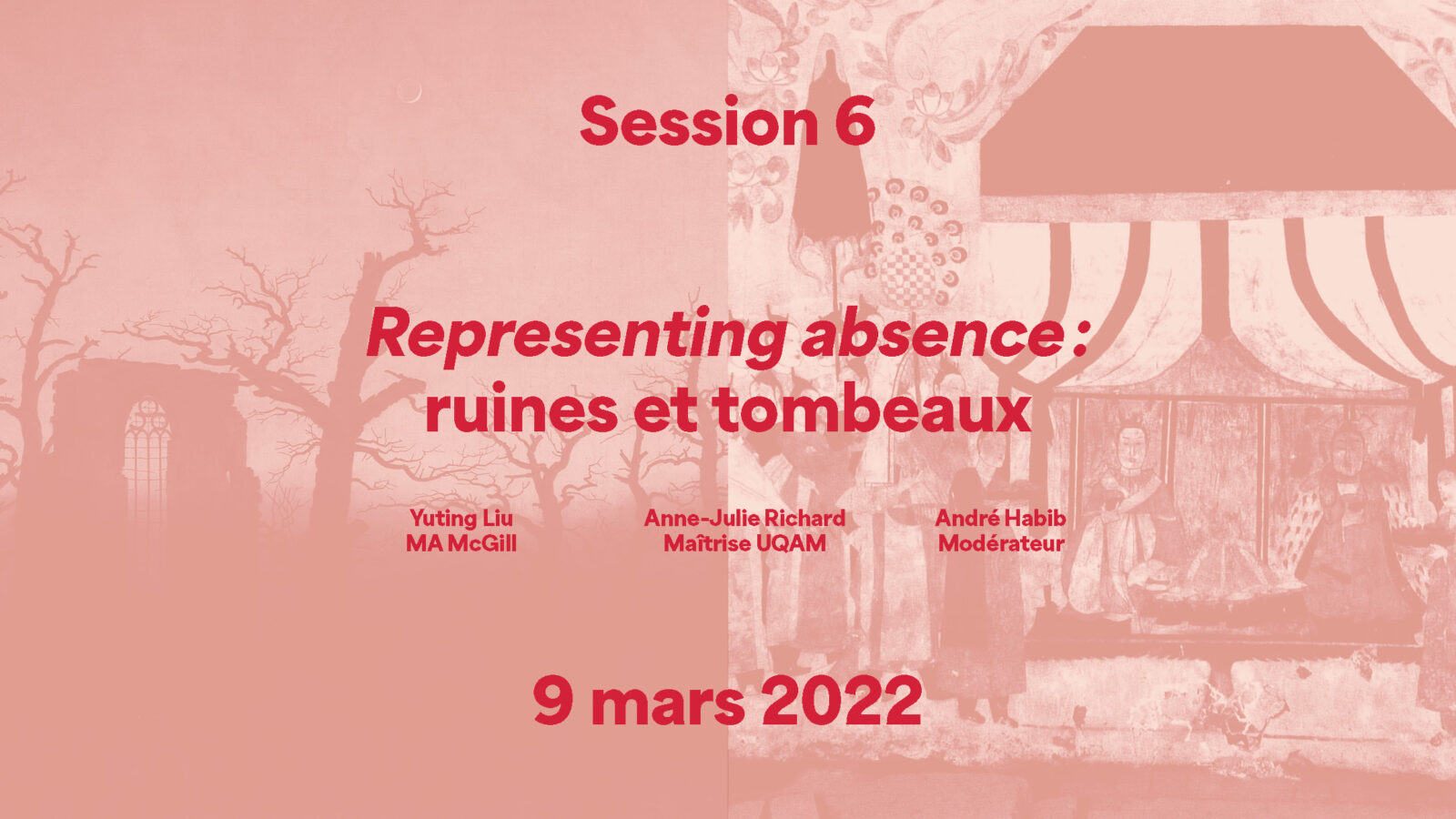Toute l’équipe d’Hypothèses est heureuse d’annoncer la sixième et dernière séance de sa programmation pour la saison 2021/2022.. Celle-ci se déroulera le Mercredi 9 mars à 17h30 sur Zoom.
Le lien est : https://uqam.zoom.us/j/89439256716
Intitulée «Representing absence : ruines et tombeaux» cette séance propose des conférences de Yuting Liu (Maitrise, McGill) «The Formation of Tomb Portraiture and The Visual Culture of The Northern Dynasties in China (4th-6th centuries)» et d’Anne-Julie Richard, (Maitrise, UQAM) « La ruine ou la mélancolie d’un signe brisé : de Friedrich à Parmiggiani ». La présidence de séance sera assurée par André Habib (UdeM).
—
The entire Hypothesis team is pleased to announce the sixth and final session of its programming for the 2021/2022 season. It will take place on Wednesday, March 9 at 5:30 pm on Zoom.
The link is : https://uqam.zoom.us/j/89439256716
Entitled « Representing absence: ruines et tombeaux », this session will feature lectures by Yuting Liu (M.A., McGill) « The Formation of Tomb Portraiture and The Visual Culture of The Northern Dynasties in China (4th-6th centuries) » and Anne-Julie Richard, (M.A., UQAM) « La ruine ou la mélancolie d’un signe brisé : de Friedrich à Parmiggiani ». The session will be chaired by André Habib (UdeM).
The Formation of Tomb Portraiture and The Visual Culture of The Northern Dynasties in China (4th-6th centuries)
Yuting Liu (Maitrise, McGill)
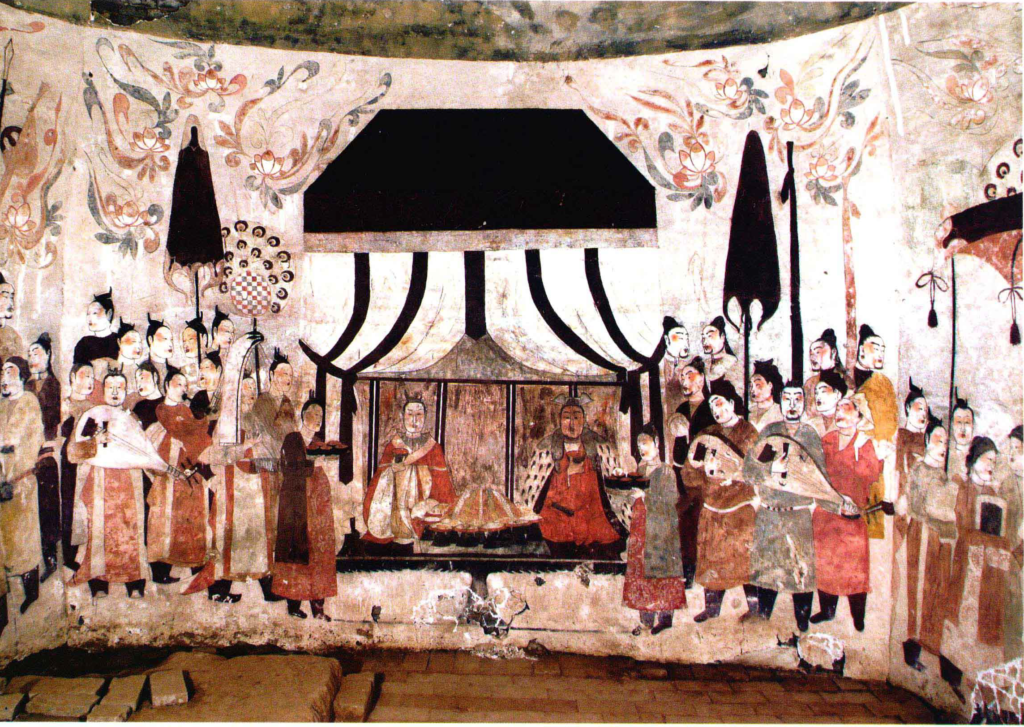
North wall of the burial chamber, Xu Xianxiu’s tomb, Taiyuan, Shanxi province, China, 571 CE.

Niche with Buddha icon, south wall, Main chamber, Cave 10, Yungang caves
This thesis studies tomb portraits – images of the deceased depicted on tomb walls – of the Northern dynasties in China within this period’s visual culture. While painting images of the tomb occupants on tomb walls had been a common practice in China in the 2nd century CE, it was in the Northern dynasties (386 – 581 CE) that the tomb portraits started to play a significant role in the tombs. The portraits began to occupy the main wall facing the tomb entrance, and stuck to a frontal pose. The author believes these changes are closely related to the diverse visual culture of the Northern dynasties and, in this thesis, she explores the formation of the tomb portraits within this background. Drawing inspiration from the studies on the visual culture, portraiture, and Chinese funerary art, she challenges the conventional perspective of the binary division of Han/non-Han cultures and the traditional framework of image-sitter studies in portraiture. By placing the tomb portraits in the hybrid visual environment of the Northern dynasties, she illustrates the fluidities of frontal images in religious icons and mortuary portraits and the permeabilities of the religious and funerary spaces.
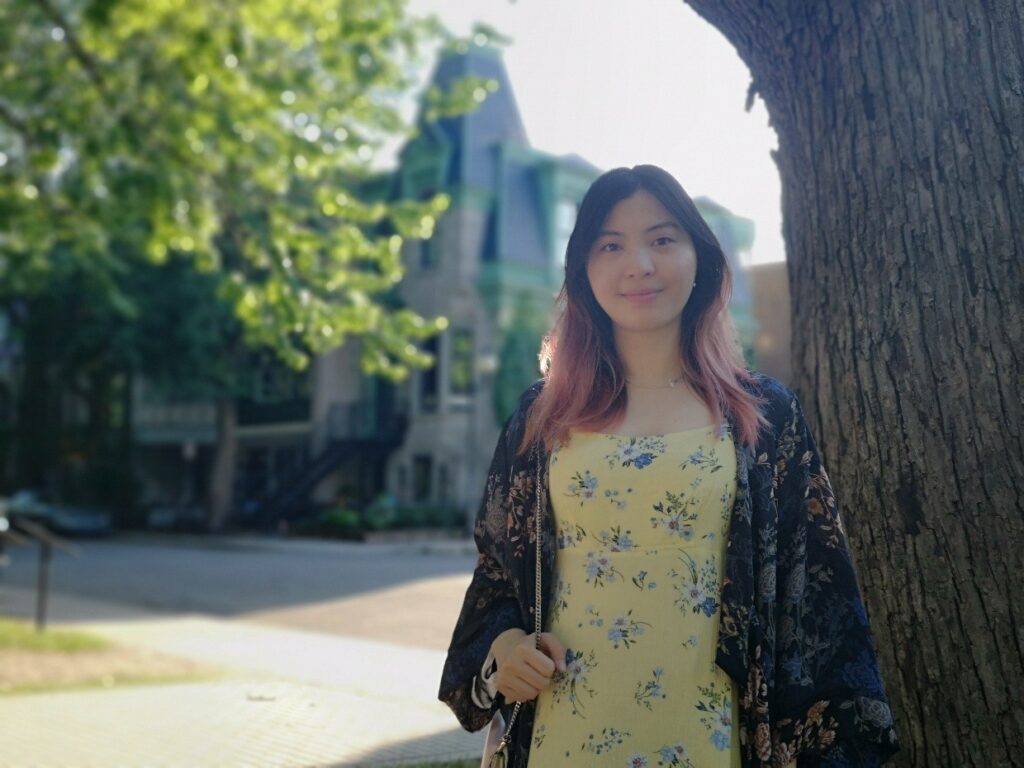
Yuting Liu received her MA from McGill University (2021). She was working under the supervision of Professor Jeehee Hong in the department of Art History and Communication Studies at McGill. Her research interests include Medieval Chinese Art and Buddhist visual culture. Her thesis research examines the tomb portraiture of the Northern dynasties (4th – 6th centuries) in China within the concerned period’s visual culture. Her research has received the MITACS Research Training Award.
Prior to her current research, Yuting received her BA and another MA from Guangzhou Academy of Fine Arts (2017), where her research focused on the relationship between pictorial space and surface of Chinese paintings.
La ruine ou la mélancolie d’un signe brisé
Anne-Julie Richard, (Maitrise, UQAM)
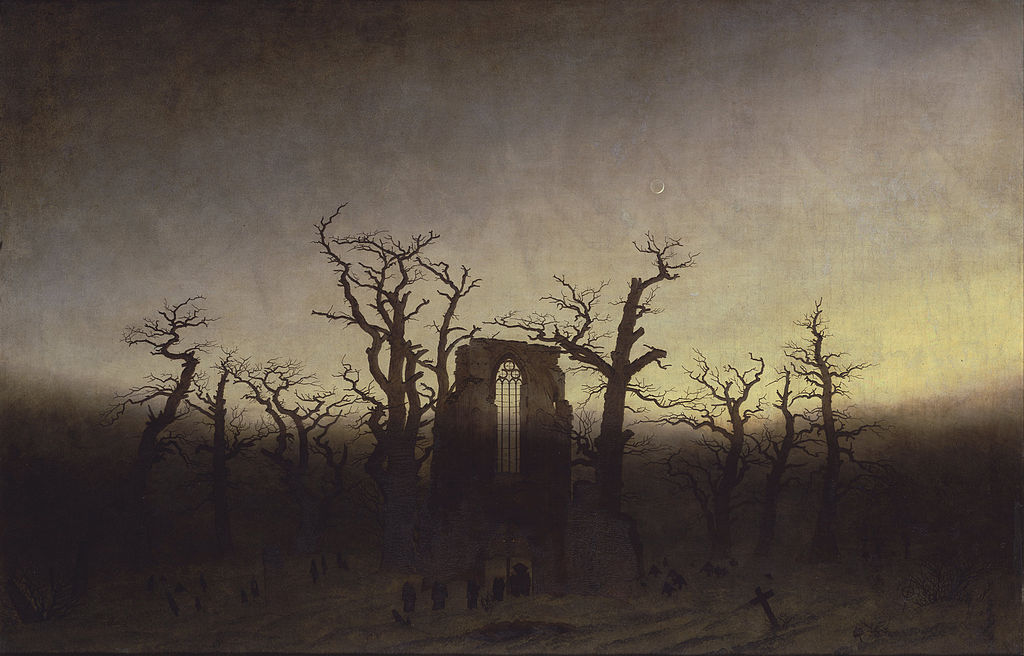
Caspar David Friedrich, L’Abbaye dans une forêt de chênes, 1809-1810, huile sur toile, 110,4 x 171 cm. Berlin, Alte Nationalgalerie.
Dès le XVIIIe siècle, le goût des ruines atteste de la nécessité de considérer la ruine comme plus qu’un simple motif esthétique : à la fois porteuse d’un discours qui la transcende et d’une expérience singulière, celle-ci fascine par sa capacité à se faire symbole. Dans le champ sémiologique théorisé par Peirce, la ruine est indice elle-même ou dépositaire d’une série d’indices, nés de quelques contacts originels ayant modulé la matérialité de l’objet. En cela, les mécanismes signalétiques de la ruine se caractérisent ainsi par l’absence de leur référent. La ruine, en ce sens, ne diffère pas de tout signe créé par un retrait et pourtant, dans son cas précis, cette absence semble se doubler d’une disparition, d’un oubli. La ruine serait quelque chose comme un signe dysfonctionnel : elle nous parle — en vain — d’une chose évanouie, d’un référent soustrait à notre regard par les aléas du temps. À partir de quelques exemples de représentations artistiques de ruines, la présente conférence entend interroger les conséquences de ce court-circuitage signalétique ; il s’agira de réfléchir à cette expérience, se déployant sous l’égide de la mélancolie, que sait catalyser la ruine.

Titulaire d’un baccalauréat en histoire de l’art de l’université Laval, Anne-Julie Richard est actuellement candidate à la maîtrise à l’UQÀM dans la même discipline. Son projet de mémoire, dirigé par Eduardo Ralickas, portant sur les réminiscences contemporaines du motif romantique de la ruine est récipiendaire des bourses d’étude du CRSH et du FRQSC au niveau de la maîtrise. Au-delà de contrats ponctuels à l’université Laval et à l’UQÀM, Anne-Julie Richard occupe aujourd’hui le poste de secrétaire du conseil d’administration des Éditions Intervention et elle contribue, à titre de stagiaire, à l’exposition retrospective sur Evergon à venir au Musée national des beaux-arts du Québec (automne 2022).
Présidence/Chair: André Habib (UdeM).
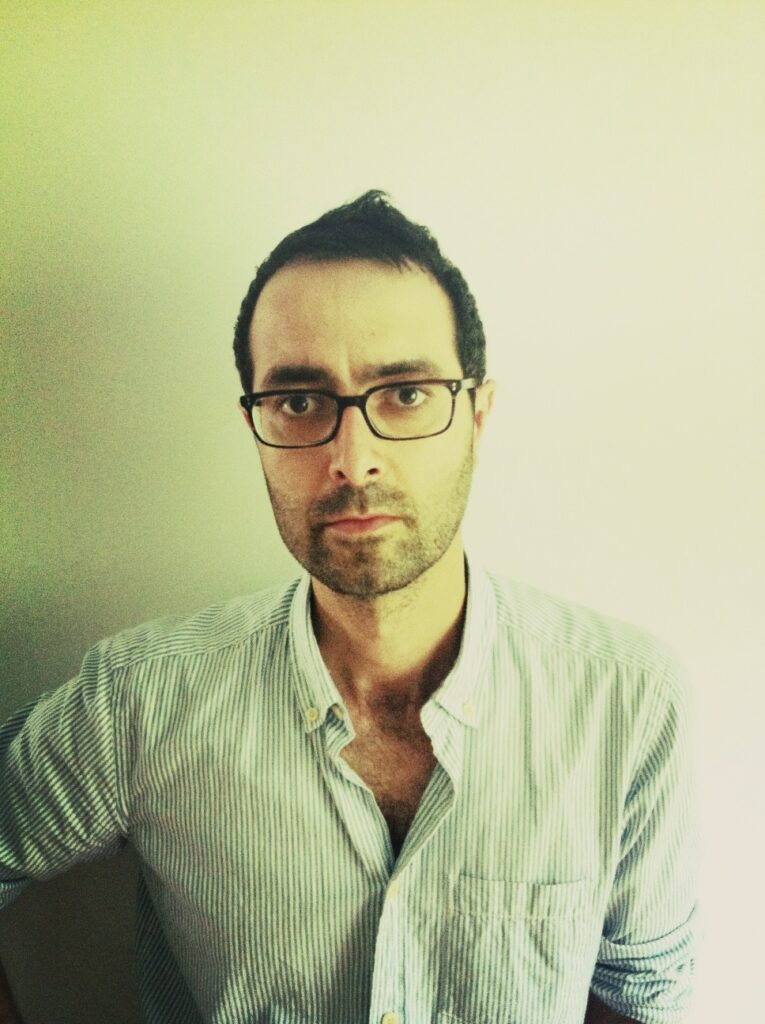
André Habib est professeur agrégé au Département d’histoire de l’art et d’études cinématographiques de l’Université de Montréal. Il est l’auteur de La main gauche de Jean-Pierre Léaud (Boréal, 2015) ainsi que de L’attrait de la ruine (Yellow Now, 2011). Il est depuis 2002 coéditeur de la revue électronique Hors champ qu’il dirige depuis 2015. Ses recherches ont porté sur l’esthétique des ruines, la cinéphilie, les archives et le cinéma expérimental, et plus récemment la nostalgie, le rétro et l’histoire des techniques. En tant que membre du projet de partenariat international TECHNÈS, il a été responsable de la série télé Connaissance du cinéma. Il est, depuis l’automne 2020, directeur adjoint du CRIalt.
